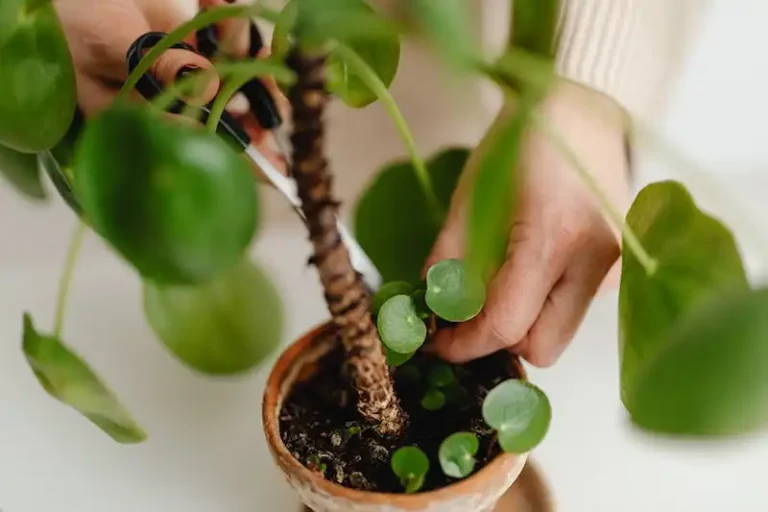Horsetail plants are a type of weed that can be a major nuisance in gardens and lawns. These weeds have a long history of survival and can be very difficult to get rid of. Whether you call them horsetail, horsetail weed, or mare’s tail, the problem remains the same – how to control and eliminate them from your garden.
Horsetail plants have been around for millions of years and have adapted to survive in many different conditions. Their unique structure allows them to grow even in the most challenging environments. They have roots that can go deep into the ground, which makes them difficult to remove by simply pulling them out. Additionally, they can spread through rhizomes, which are root-like structures that grow horizontally underground and produce additional plants.
One of the most frustrating aspects of horsetail weeds is that they are resistant to many traditional weed-killing methods. Herbicides may not be able to penetrate their outer layer, leaving the inner part of the plant untouched. Digging them up can also be challenging, as any small piece left behind can regrow into a new plant. So, how can you efficiently get rid of horsetail weeds?
While there is no foolproof way to completely eradicate horsetail plants, there are several methods that can help control their growth. One organic option is using vinegar, which can be sprayed directly onto the weeds to kill them. However, this method may not be as efficient as you would like, especially for larger infestations. Mulching in March and mowing your lawn more frequently during the growing period can also help reduce the number of horsetail plants.
5 FAQs about horsetail weeds and how to control them:
- What is horsetail weed? Horsetail weed (Equisetum arvense) is a perennial weed that can be found in many gardens and lawns. It grows in moist soils and can be very invasive if not controlled.
- How to identify horsetail weeds? Horsetail weeds have a unique appearance with a tall, hollow stem and cone-shaped parts at the top. They can grow up to 2 feet in height and have a bright green color.
- What is the best way to kill horsetail weeds? While there is no surefire way to kill horsetail weeds completely, a combination of methods can help control their growth. This includes using herbicides, digging out the roots, and regularly removing any new growth.
- Why are horsetail plants so problematic? Horsetail plants are problematic because of their ability to spread quickly and survive in various conditions. They can quickly take over a garden or lawn, choking out desired plants and creating an eyesore.
- What are some good tips for getting rid of horsetail weeds? Some tips for getting rid of horsetail weeds include removing them as soon as possible, digging out the roots, using herbicides specifically targeted for horsetail, and ensuring your garden or lawn has good drainage.
References:
– Mertz, R. F. (2001). The biology of Canadian weeds. 113. Equisetum arvense L. Canadian Journal of Plant Science, 81(4), 867-875.
– University of California Agriculture and Natural Resources. ( 2025). MontGuide: Horsetail control in home garden: prevention and management. Retrieved from http://anrcatalog.ucanr.edu/pdf/7489.pdf
As with any weed problem, being proactive and consistent in your efforts is key. By learning more about horsetail plants and their behaviors, you’ll be better equipped to tackle the challenge they present. Remember, while you may not be able to completely eliminate horsetail weeds, with the right approach, you can keep them under control and maintain a healthy garden or lawn.
How do I get rid of horsetails
Killing horsetails can be a challenging task, as they are persistent weeds that have been around for millions of years. The New York Botanical Garden (NYBG) describes them as “one of the few plants on Earth that is impossible to control completely.”
Although mowing might seem like a simple solution, it doesn’t completely eradicate horsetails because their rhizomes and underground cones remain intact. Using a rototiller may also not be efficient since it can break the rhizomes, causing them to produce even more horsetails.
If you want to try to get rid of horsetails, there are a few strategies you can consider:
- Chemical Control: Using herbicides designed to kill horsetails can be effective, but it may take repeated applications. Read and follow the instructions provided by the chemical manufacturer and refer to your local gardening center for specific advice.
- Manual Removal: Pulling up the horsetail plants by hand, making sure to remove as much of the root system as possible, can help control their spread. Be diligent and thorough in your efforts.
- Mulching: Applying a thick layer of mulch, such as wood chips, can help suppress the growth of horsetails. This method works best in fertile and well-drained soils.
- Vinegar: Some gardeners claim that spraying horsetails with vinegar can help kill them. However, its effectiveness is debated.
It’s important to note that getting rid of horsetails completely may not be achievable, but these tips can help control their growth and minimize their impact in your gardens or fields. Consult with local experts or gardening professionals for advice tailored to your specific situation.
Horsetail Plants: How To Get Rid Of Horsetail Weeds
Horsetail plants, also known as horsetail weeds, can be a challenging and frustrating problem to deal with in gardens and surrounding areas. These problematic weeds have been around for over 300 million years and are highly adaptable, making them difficult to eradicate.
Horsetails are perennial plants that grow from rhizomes, which are underground stems that spread rapidly and can quickly take over an area. They have hollow, jointed stems that resemble the tail of a horse, hence their name. The shoots of horsetails emerge in the spring and can grow up to 2 feet tall.
One of the most efficient ways to get rid of horsetail weeds is by using a weed killer specifically designed to target them. There are different types of weed killers available, so be sure to read the instructions and choose one that is suitable for horsetails. It is also possible to control horsetails organically by using natural herbicides or by manually removing them.
When dealing with horsetail weeds, it’s important to consider some FAQs:
- Why are horsetail plants problematic? Horsetail plants have deep roots and rhizomes that can regenerate new shoots, making them difficult to kill entirely.
- Is it possible to get rid of horsetail weeds for good? While it may be challenging, it is possible to eradicate horsetail weeds with persistent effort and the right methods.
- What can I do to prevent horsetails from growing? To prevent horsetails from spreading, it’s important to remove any existing plants and their roots. Additionally, creating a barrier around your garden using plastic sheeting can help prevent their growth.
- Can horsetails be grown in gardens? Horsetails are not suitable for most gardens as they can take over and compete with other plants for resources. However, some gardeners may choose to grow them in containers or in a controlled area.
If you are having a difficult time controlling horsetail weeds in your garden, it may be helpful to seek guidance from your local university extension or library. They can provide you with a comprehensive guide on how to deal with horsetail weeds in your specific area.
References:
- University extension resources on horsetail plants
- Gardening books and guides on weed control
- Scientific articles on horsetail eradication methods
What are Horsetail Weeds
Horsetail weeds, also known as Equisetum arvense, are primitive perennial plants that can be found in many parts of the world. They have a distinctive appearance with their hollow, jointed stems that resemble a horse’s tail, hence the name.
Horsetail weeds are considered invasive because they spread quickly and can be difficult to control. They have an extensive root system that consists of rhizomes, which are underground stems that produce new shoots. This makes them resilient and capable of regenerating even if the above-ground parts are removed.
One of the challenges with horsetail weeds is that they can grow in different types of soils and environments, making them a problem in both lawns and gardens. They thrive in damp, poorly drained areas, but they can also tolerate dry conditions. This adaptability makes them hardy and persistent.
Getting rid of horsetail weeds can be a time-consuming process because their deep root system makes it difficult to completely remove them. Digging them out can be effective, but it requires patience and persistence. Some gardeners opt to cover the affected area with plastic or other barriers to prevent the weeds from receiving sunlight and growing.
The use of herbicides can also be an option for killing horsetail weeds, although it is not always the answer. Many herbicides do not effectively control horsetail because their extensive roots make it harder for the chemical to reach all parts of the plant. Additionally, horsetail weeds have a waxy coating on their leaves, which can make it more challenging for the herbicide to penetrate.
If you’re considering using herbicides, it is essential to follow the instructions carefully and choose a product that is specifically designed to target horsetail weeds. Applying the herbicide during the active growing period of the weeds, which is typically in spring and early summer, may yield better results.
Another method for controlling horsetail weeds is through regular maintenance and care for your lawn or garden. Mowing regularly can help weaken the plants and prevent them from producing spores. Mulching can also be beneficial in preventing horsetail weeds from germinating by blocking sunlight and suppressing their growth.
In conclusion, horsetail weeds can be a persistent problem in your lawn or garden. While there are methods available to control their growth, it may require a combination of approaches to effectively get rid of them. Patience and consistent effort are key when dealing with horsetail weeds.




